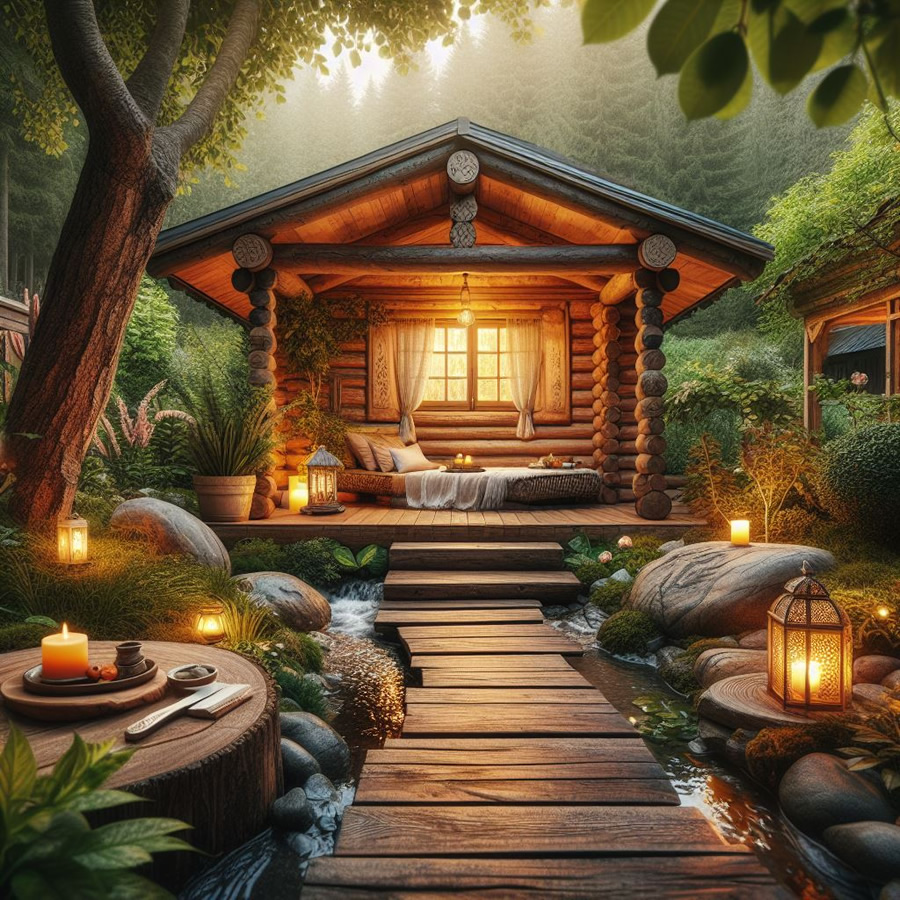The Importance of Tranquility in Your Garden Log Cabin
Your garden log cabin is more than just a structure; it's a sanctuary, a retreat from the stresses of everyday life. Creating a tranquil environment within your cabin is essential for promoting relaxation, reducing stress, and enhancing your overall wellbeing. In this blog post, we'll explore various tips and techniques for transforming your garden log cabin into a peaceful haven where you can escape, unwind, and recharge.

1. Choose Calming Colour Schemes
Start by selecting calming colour schemes for the interior of your garden log cabin. Soft, neutral tones such as beige, taupe, and sage green create a serene atmosphere and help to promote relaxation. Avoid bold, bright colours that can be visually stimulating and opt for muted shades that evoke a sense of tranquility and harmony.
2. Incorporate Natural Elements
Bring the outdoors inside by incorporating natural elements into your cabin decor. Wooden furniture, stone accents, and soft, natural fabrics create a connection to nature and enhance the sense of tranquility. Consider adding indoor plants to purify the air and add a touch of greenery to your space, further enhancing the calming atmosphere.
3. Create Comfortable Seating Areas
Create comfortable seating areas where you can relax and unwind in your garden log cabin. Invest in plush sofas, oversized armchairs, and soft cushions to provide ample seating for lounging and unwinding. Arrange your furniture in a way that encourages conversation and relaxation and consider adding throws and blankets for extra warmth and comfort.
4. Enhance Natural Light
Maximize natural light in your garden log cabin to create a bright, airy atmosphere that promotes relaxation. Keep windows unobstructed and consider adding skylights or roof windows to bring in additional sunlight. Sheer curtains or blinds can help to filter light and create a soft, diffused glow that enhances the sense of tranquility.
5. Add Ambient Lighting
In addition to natural light, incorporate ambient lighting to create a warm and inviting atmosphere in your garden log cabin. Use soft, diffused lighting sources such as table lamps, floor lamps, and wall sconces to create a cosy, welcoming glow. Avoid harsh overhead lighting that can be jarring and opt for softer, more flattering lighting options instead.
6. Minimize Clutter
Keep your garden log cabin clutter-free to promote a sense of calm and relaxation. Invest in storage solutions such as baskets, bins, and shelving units to keep belongings organized and out of sight. Clear surfaces and tidy spaces create a sense of openness and tranquility, allowing you to fully relax and unwind in your cabin retreat.
7. Incorporate Relaxation Techniques
Finally, incorporate relaxation techniques into your daily routine to enhance the tranquility of your garden log cabin. Practice mindfulness meditation, deep breathing exercises, or yoga to promote relaxation and reduce stress. Create a dedicated meditation or yoga space within your cabin where you can engage in these practices regularly, further enhancing your sense of wellbeing.
Conclusion: Transform Your Garden Log Cabin into a Tranquil Retreat
In conclusion, creating a tranquil environment in your garden log cabin is essential for promoting relaxation, reducing stress, and enhancing your overall wellbeing. By choosing calming colour schemes, incorporating natural elements, creating comfortable seating areas, enhancing natural and ambient lighting, minimizing clutter, and incorporating relaxation techniques, you can transform your cabin into a peaceful sanctuary where you can escape, unwind, and recharge. Embrace these tips and techniques to create the ultimate tranquil retreat in your garden log cabin and enjoy the benefits of relaxation and rejuvenation for years to come.
Author - Martin Corby
Posted - 07 Apr 2024
Disclaimer: This information is subject to change and as such, is provided for informational purposes only and does not constitute professional advice. Readers are encouraged to verify the details independently.
© Copyright 2001 - 2024 Garden Adventure Ltd